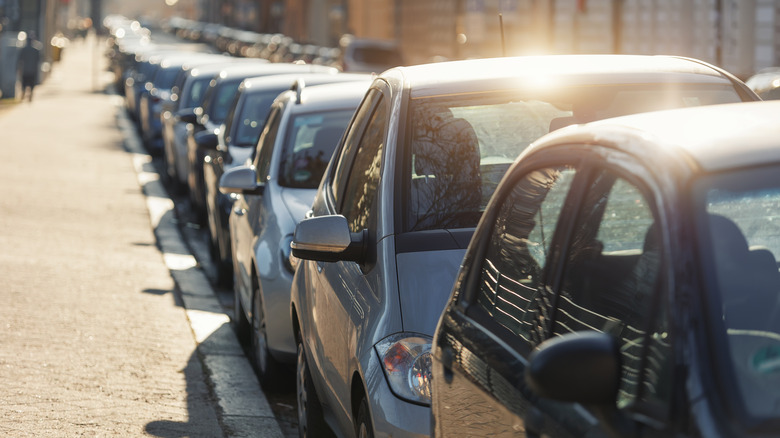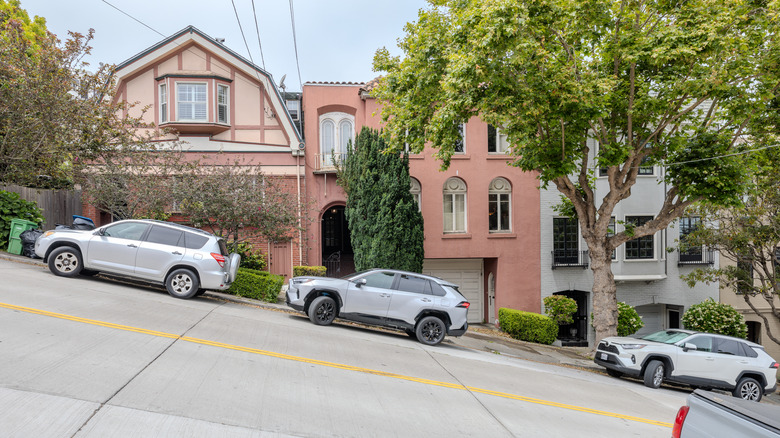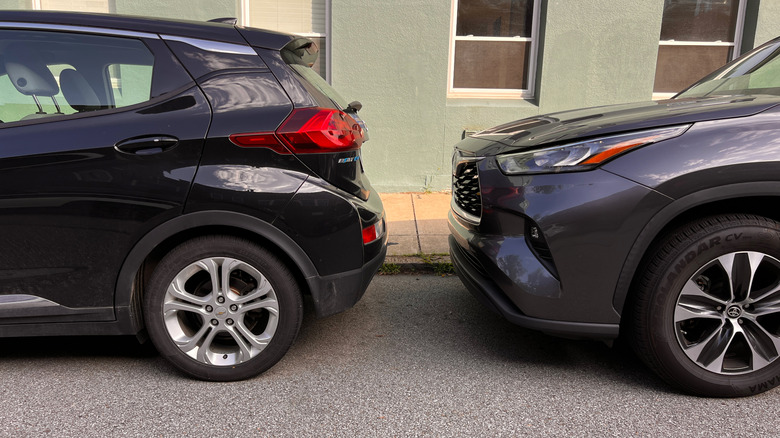How To Parallel Park Perfectly Every Single Time
Parallel parking tends to strike fear in new drivers. It's one of the common mistakes that cause people to fail their driving test. But once you know the steps, it's a skill you can rely on every day, especially in tight city spaces. The idea is simple: park your car parallel to the curb, between two vehicles, without bumping anything or causing a traffic jam. While it takes a bit of practice, it's not as hard as it looks when you break it down. In fact, once you've got the technique down, it can quickly become second nature.
The secret to nailing it every time is patience and control. You don't need a fancy car with parking sensors or cameras — although they help — you just need to know the angles and use your mirrors smartly. Parallel parking isn't just about fitting into a space but about understanding your car's movement and knowing when to steer. Learning this skill can improve your confidence and make you a more capable and alert driver overall. With a few easy steps and steady hands, anyone can do it smoothly and confidently.
Mastering the parallel parking step by step
Start by finding a parking spot that's at least three feet longer than your car, as this extra space gives you more room to angle in without scraping another vehicle. Signal early to let other drivers know you're about to park, then pull up slowly alongside the car in front of the space, keeping about 2 to 3 feet of side distance. Make sure your rear bumper lines up with the front edge of the parking space and the middle of your car is in line with the rear bumper of the car that will be in front if you. Before you begin to back up, take a moment to check your mirrors, blind spots, and surroundings for passing cars, cyclists, or pedestrians.
Now, begin reversing slowly at about a 45-degree angle into the space. Keep your movements controlled, as rushing usually leads to oversteering. Once your rear wheels are roughly 18 inches from the curb, start turning your steering wheel in the opposite direction to straighten the car. Use your side mirrors to track how close you're getting to the curb and the bumper of the car behind you. If you're off by a little, it's completely fine to pull forward and realign. Ideally, your car should end up about 6 to 18 inches from the curb — close enough for safety, far enough to avoid curb rash. Don't forget to use your parking brake, also known as emergency brake, once you're settled.
Tips to keep in mind while parking
Always keep your hands at the 9 and 3 o'clock position on the wheel for better control, and steer smoothly and avoid jerky movements, especially in tight spaces where small errors matter. If the space looks too tight, then it probably is, and in that case, it's better to drive on and find a bigger one than to risk scraping a bumper or someone's license plate. Use your nearside mirror to judge how close you are to the curb, and don't be afraid to reposition slightly if your angle feels off. A second try is better than a dent.
Practice is the best way to get comfortable. Use cones in an empty lot to simulate parked cars, and mark a curb with tape or rope to build precision. Over time, your sense of space and angles will improve. Don't forget to apply the parking brake and check for traffic before stepping out. Of course, if you ever tap another car, don't drive off — leave your contact info to do the right thing. Remember, learning to parallel park manually builds confidence, even if your car has a self-parking feature. Mastering it yourself makes you a more aware and capable driver in every situation.


